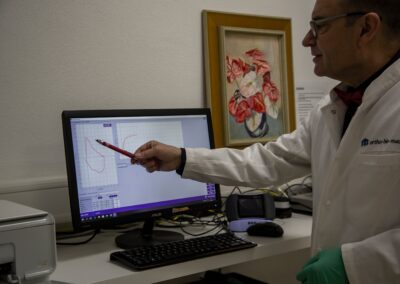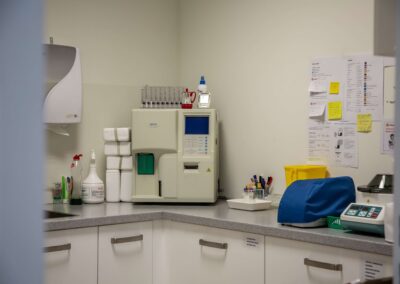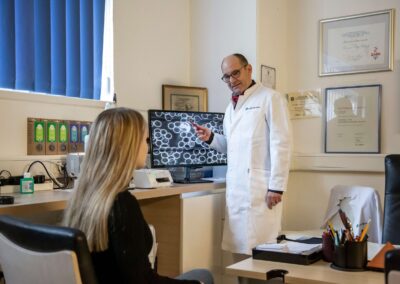Evaluation of intestinal bacterial flora
Thanks to this test, we are able to detect three types of problems: intestinal bacterial flora, absorption of macronutrients and functionally useful enzymes and molecules. It is helpful because it allows us to evaluate intestinal functionality in a fully personalised manner.
Food intolerance
Using a drop of blood from the patient’s finger and a kit based on the ELISA immunoenzymatic system, after about 40 minutes, we will have the results and the patient will be instructed on what foods to avoid.
Anti-ageing laboratory diagnostics
The goal of anti-ageing medicine, also called orthomolecular or functional medicine, is to investigate nutritional deficiencies and the potential presence of factors that predispose a person to developing certain diseases.
Oxidative stress – damage by free radicals
Oxidative stress is an imbalance between oxidants (e.g., free radicals) and antioxidants.
Dark-field microscopy
Dark-field microscopy is a method for studying blood cells. It uses an optical microscope to which a special condenser is applied that is able to reveal particles that are not otherwise visible.
Heavy metals
The Oligoscan test can identify excessive levels of heavy metals and mineral deficiencies.
Contact us!
Adress
Ortho Bio Med
Via Industrie 14
6535 Roveredo GR
Phone
+41 91 827 30 50
E-mail
info@orthobiomed.ch



